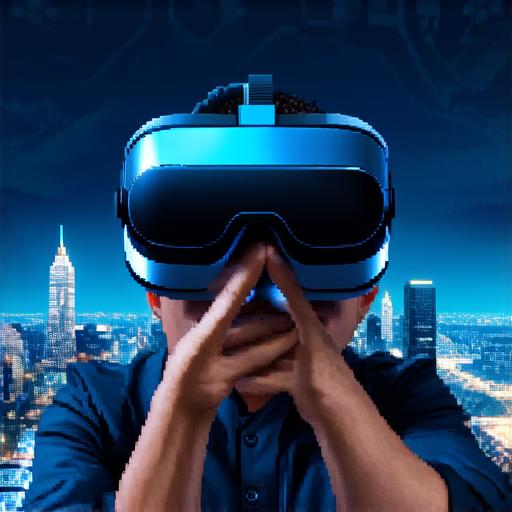
What does a virtual reality headset do?

Virtual reality (VR) is an emerging technology that allows users to experience immersive, interactive digital environments as if they were real.
How does a VR headset work?
A VR headset typically consists of two displays that are mounted on a helmet-like structure. These displays present stereoscopic images, which means they display slightly different perspectives from each eye to create a more realistic 3D effect. The displays also track the movement of your head and adjust the image accordingly, allowing you to look around in real time.
In addition to the displays, a VR headset may also include sensors such as accelerometers and gyroscopes to detect changes in head position and orientation. This information is used to adjust the image and ensure that it stays synchronized with your movements.
Some VR headsets also incorporate additional hardware such as motion controllers or hand tracking devices, which allow you to interact with virtual objects within the environment. For example, you might use a motion controller to grab an object in the virtual world or track the movement of your hands to cast spells.
What are the benefits of using a VR headset?
There are several benefits to using a VR headset, including:
- Immersive experiences: A VR headset allows you to fully immerse yourself in a virtual environment, providing a level of realism and interactivity that is difficult to achieve with traditional media such as movies or video games.
- Enhanced learning and training: VR technology can be used to create realistic simulations for training purposes, allowing professionals to practice their skills in a safe and controlled environment. For example, medical students might use a VR headset to simulate surgical procedures, while pilots might use it to practice flying in a virtual cockpit.
- Accessibility: A VR headset can be an accessible tool for people with disabilities or those who are unable to travel to remote locations. For example, a person with mobility issues might use a VR headset to explore historical sites without leaving their home.
- Therapeutic uses: VR technology has been shown to have therapeutic benefits for a variety of conditions, including PTSD, anxiety, and depression. By providing a controlled environment that can be customized to meet the needs of each individual, VR therapy can be an effective tool for treating these conditions.
Real-life examples of VR headset use
There are many real-life examples of how VR headsets are being used in various industries and fields. Here are a few:
- Gaming: The gaming industry has embraced VR technology, with many popular games now available for VR platforms such as the Oculus Rift and HTC Vive. Players can experience these games in a fully immersive environment, with intuitive motion controls that make it feel like they are truly inside the game world.
- Education: VR technology is being used in education to provide students with immersive learning experiences that can help them better understand complex concepts. For example, a biology class might use a VR headset to explore the human body in 3D, or a history class might use it to virtually visit ancient historical sites.
- Training: As mentioned earlier, VR technology is being used for training purposes in a variety of fields. For example, the military is using VR simulations to train soldiers for combat situations, while airlines are using them to train pilots for emergency procedures.
- Therapy: As mentioned, VR therapy is gaining popularity as an effective tool for treating a variety of conditions.


